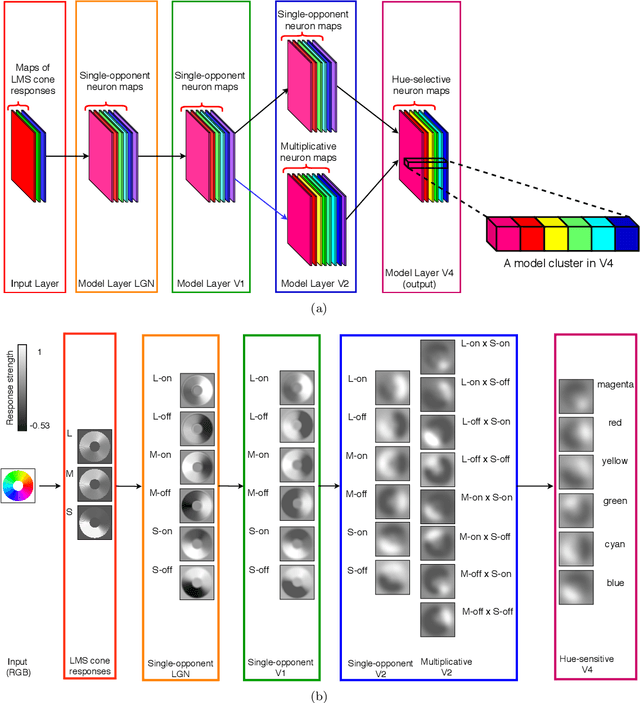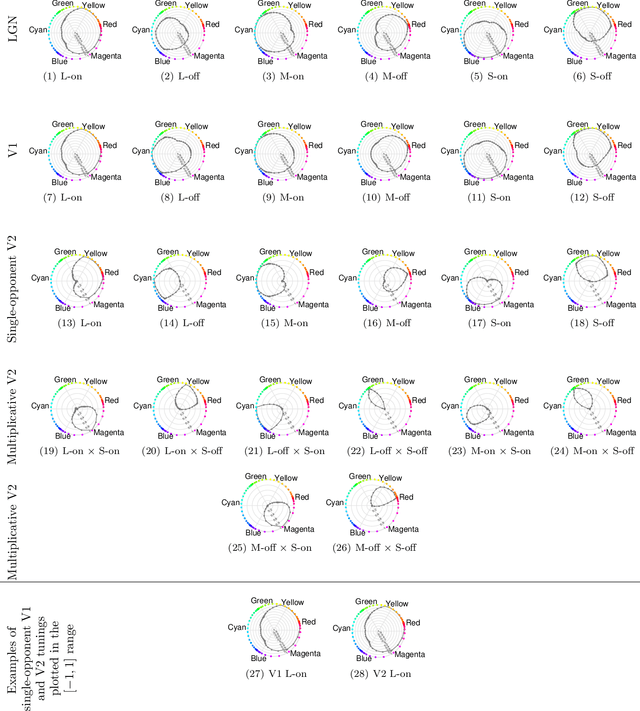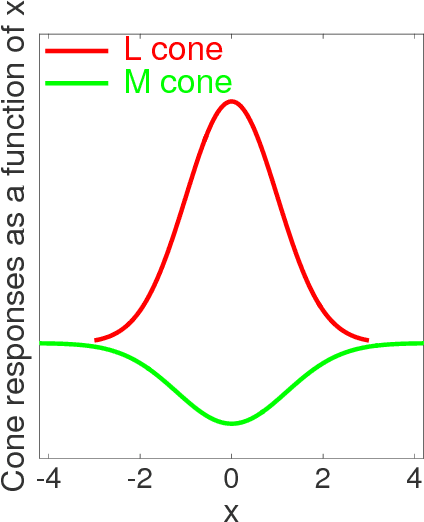Andrei Mouraviev
Multiplicative modulations in hue-selective cells enhance unique hue representation
Jul 03, 2019



Abstract:There is still much to understand about the color processing mechanisms in the brain and the transformation from cone-opponent representations to perceptual hues. Moreover, it is unclear which areas(s) in the brain represent unique hues. We propose a hierarchical model inspired by the neuronal mechanisms in the brain for local hue representation, which reveals the contributions of each visual cortical area in hue representation. Local hue encoding is achieved through incrementally increasing processing nonlinearities beginning with cone input. Besides employing nonlinear rectifications, we propose multiplicative modulations as a form of nonlinearity. Our simulation results indicate that multiplicative modulations have significant contributions in encoding of hues along intermediate directions in the MacLeod-Boynton diagram and that model V4 neurons have the capacity to encode unique hues. Additionally, responses of our model neurons resemble those of biological color cells, suggesting that our model provides a novel formulation of the brain's color processing pathway.
Color-opponent mechanisms for local hue encoding in a hierarchical framework
Feb 20, 2018



Abstract:A biologically plausible computational model for color representation is introduced. We present a mechanistic hierarchical model of neurons that not only successfully encodes local hue, but also explicitly reveals how the contributions of each visual cortical layer participating in the process can lead to a hue representation. Our proposed model benefits from studies on the visual cortex and builds a network of single-opponent and hue-selective neurons. Local hue encoding is achieved through gradually increasing nonlinearity in terms of cone inputs to single-opponent cells. We demonstrate that our model's single-opponent neurons have wide tuning curves, while the hue-selective neurons in our model V4 layer exhibit narrower tunings, resembling those in V4 of the primate visual system. Our simulation experiments suggest that neurons in V4 or later layers have the capacity of encoding unique hues. Moreover, with a few examples, we present the possibility of spanning the infinite space of physical hues by combining the hue-selective neurons in our model.
 Add to Chrome
Add to Chrome Add to Firefox
Add to Firefox Add to Edge
Add to Edge